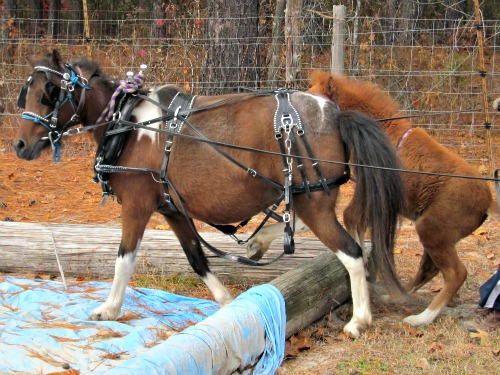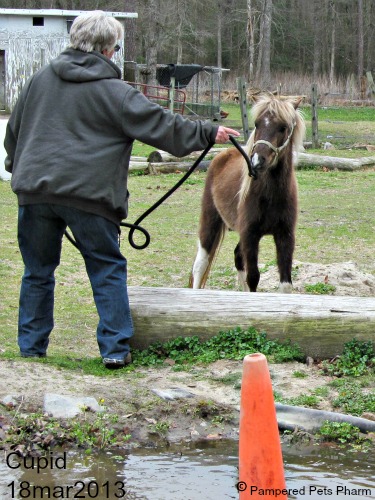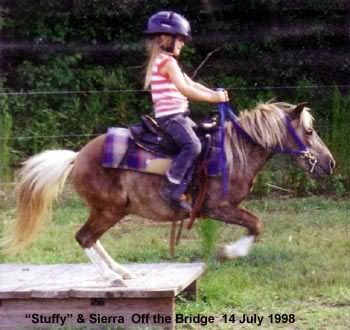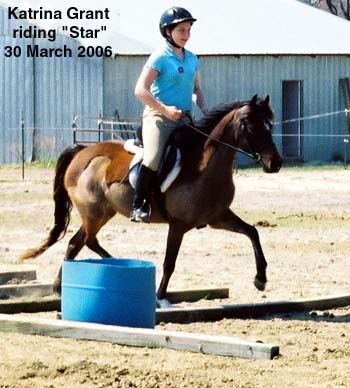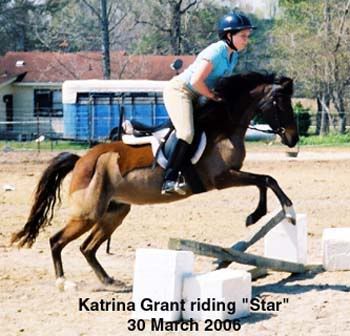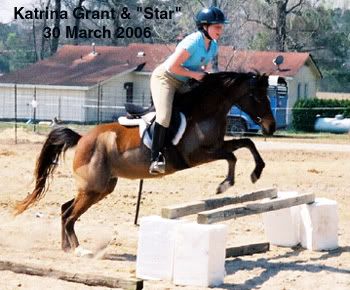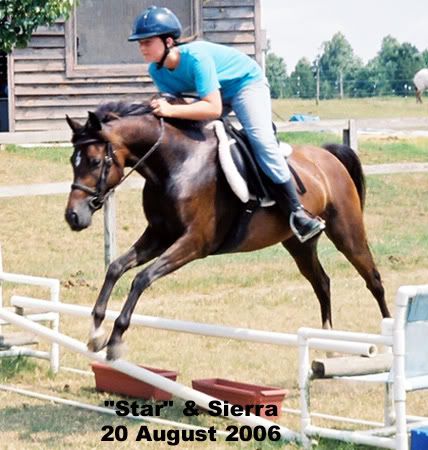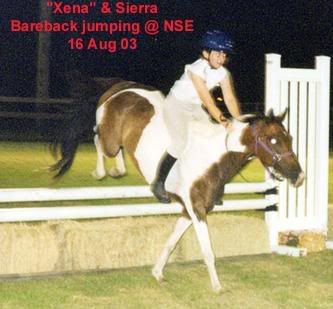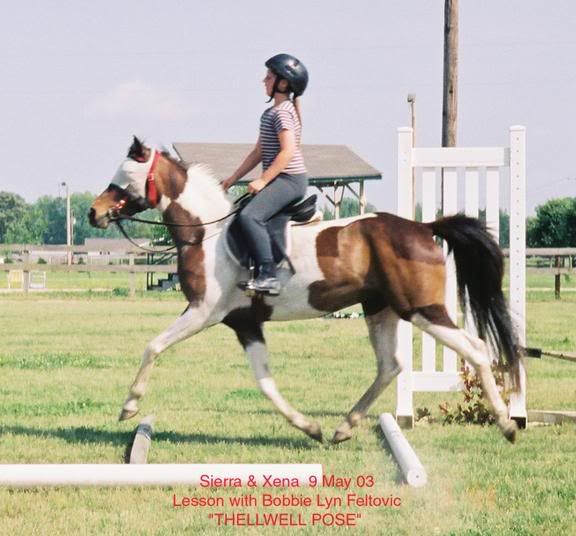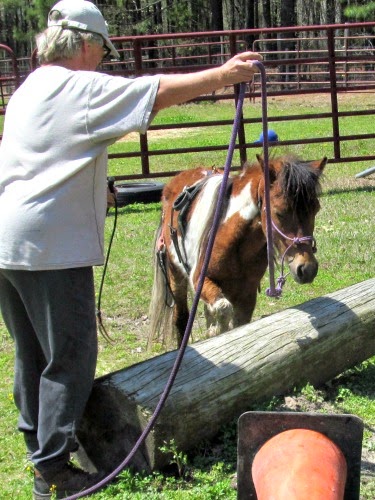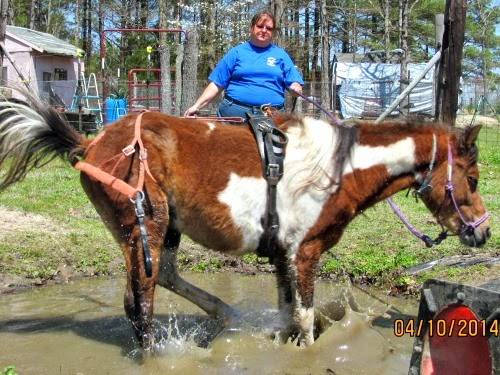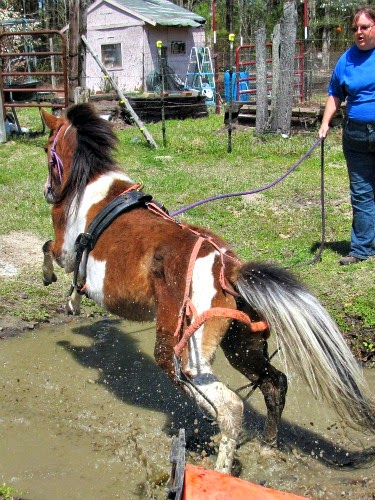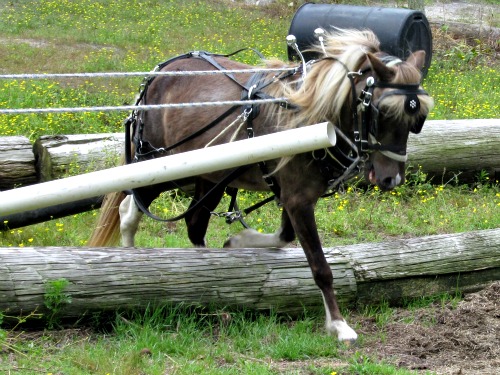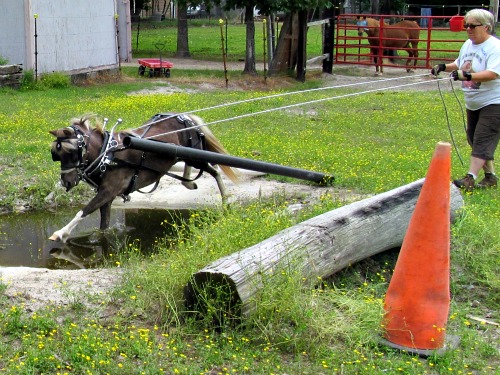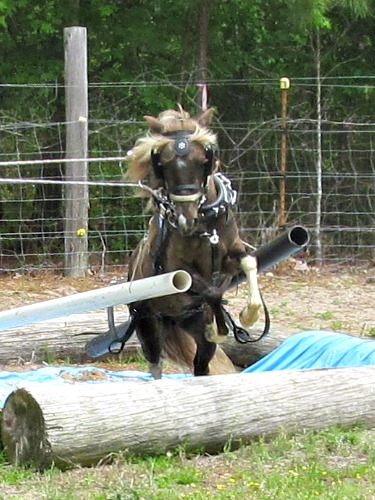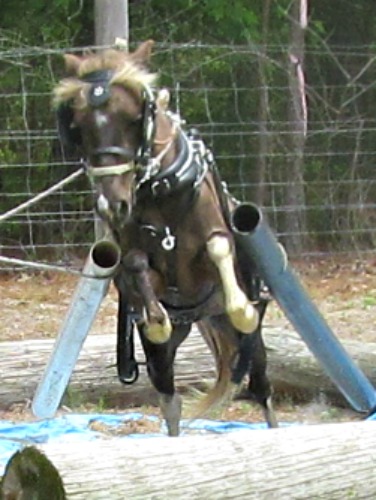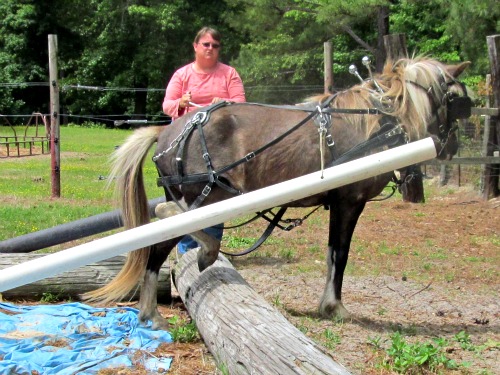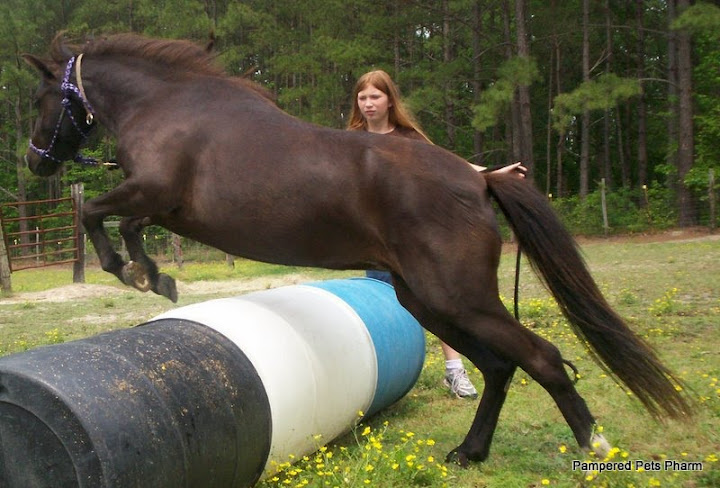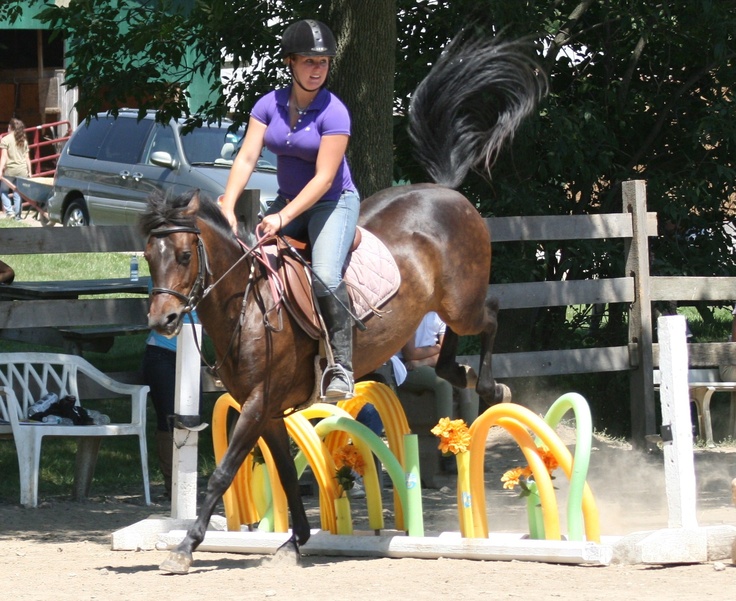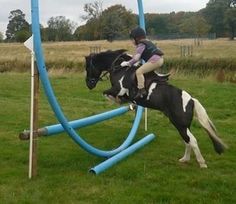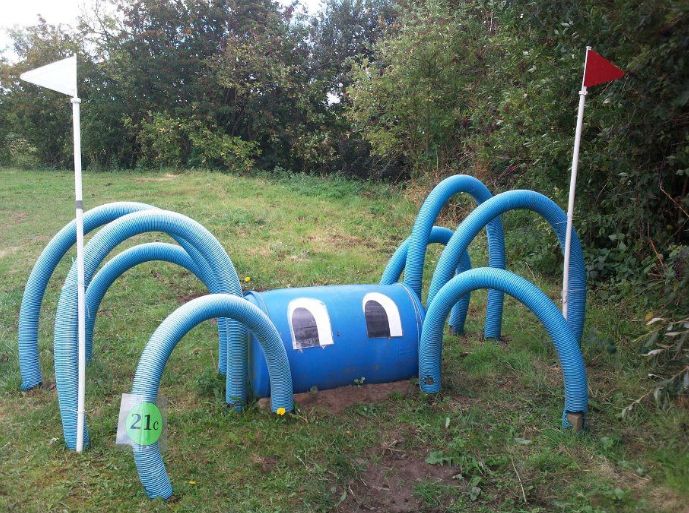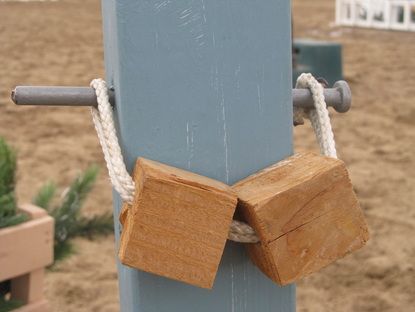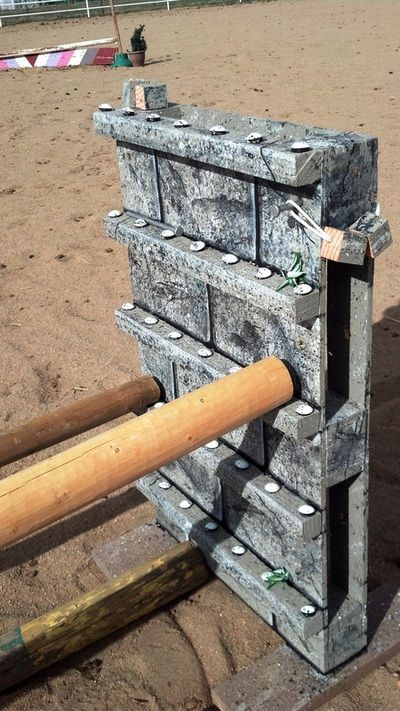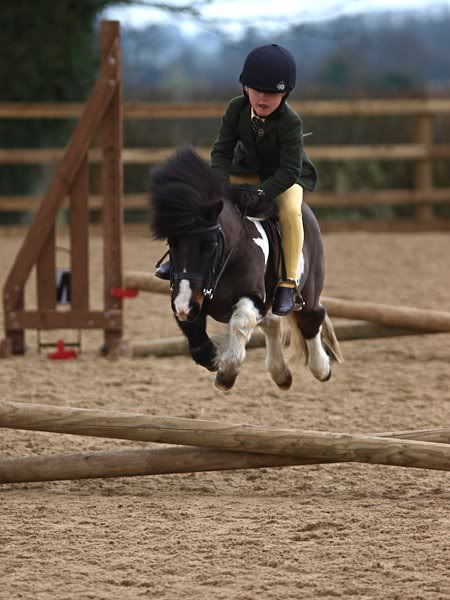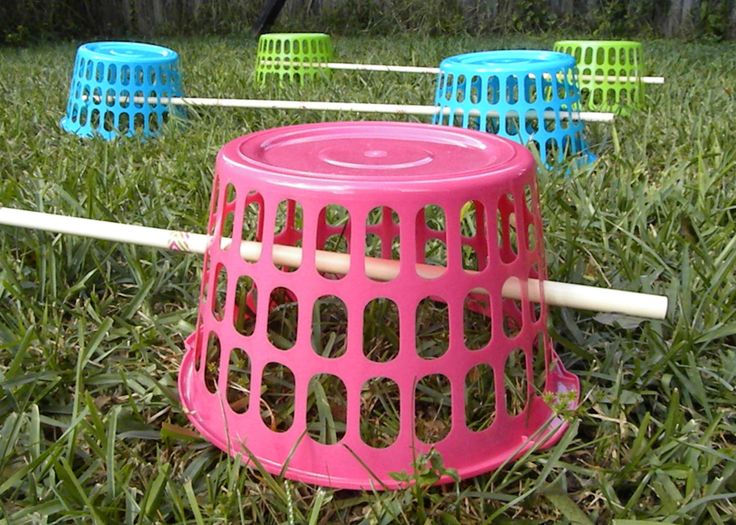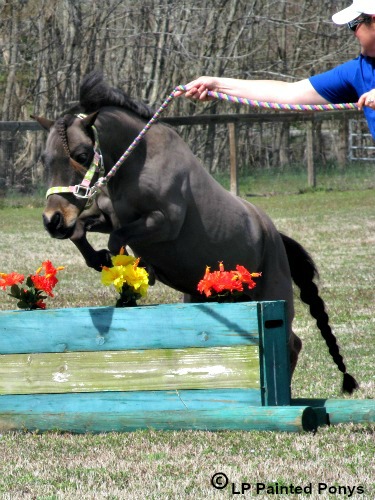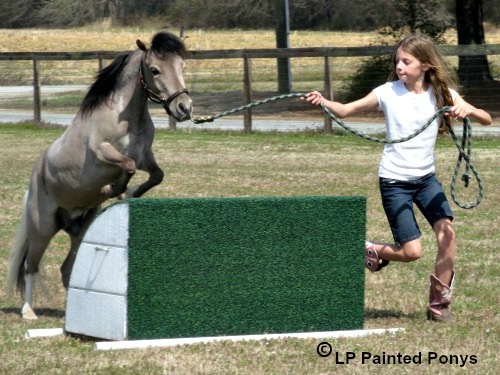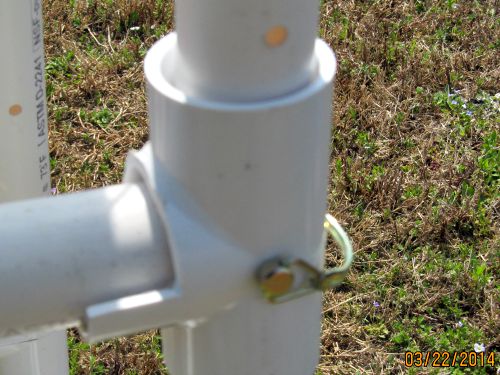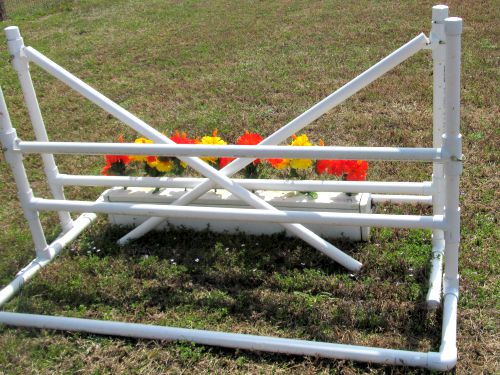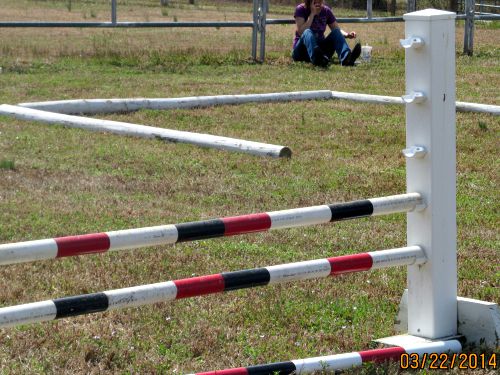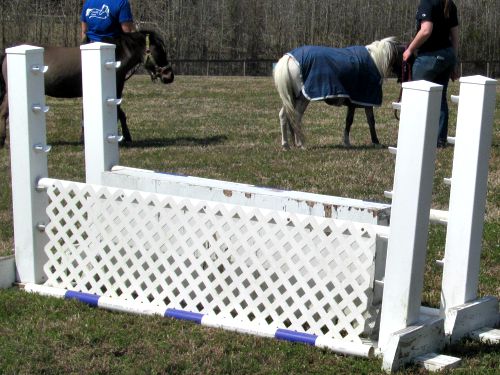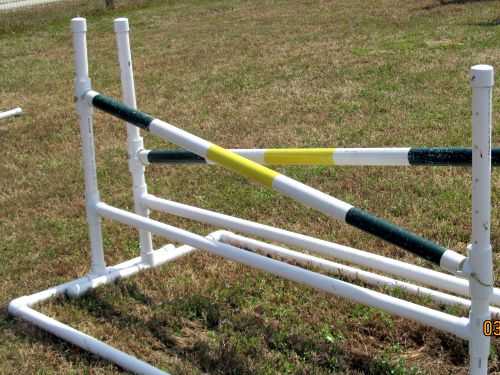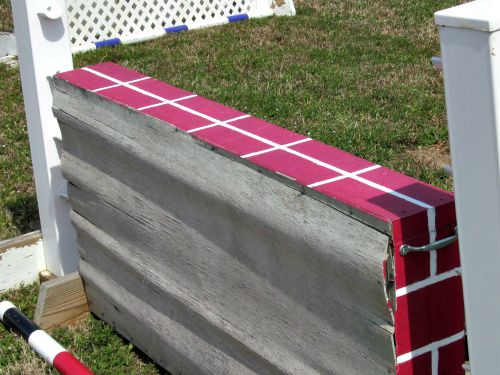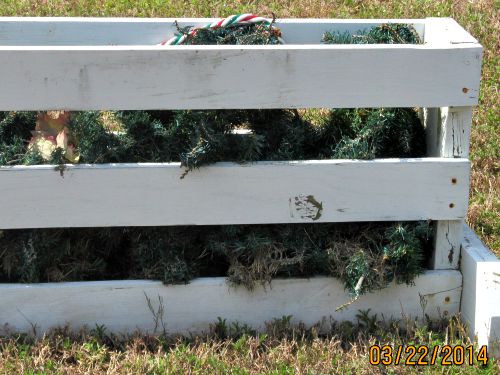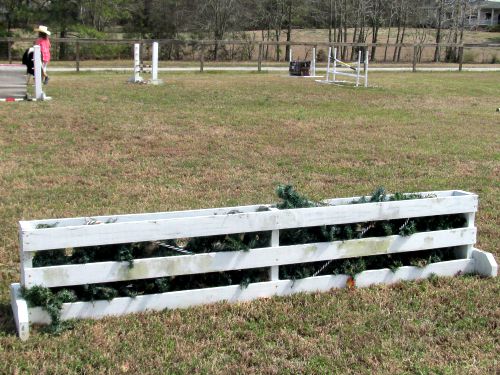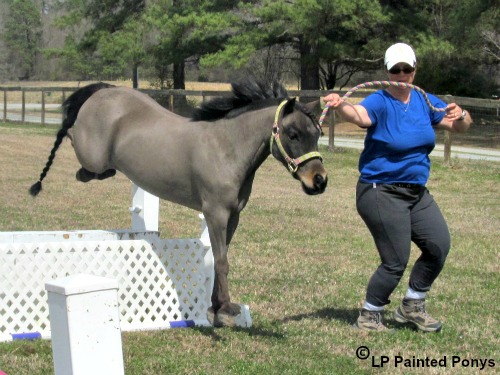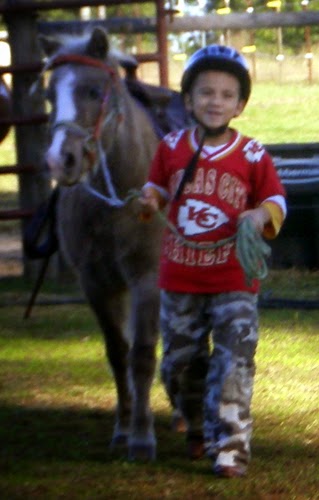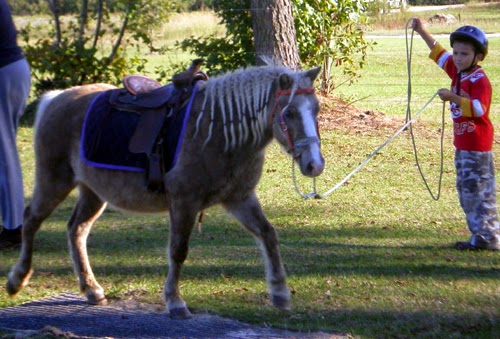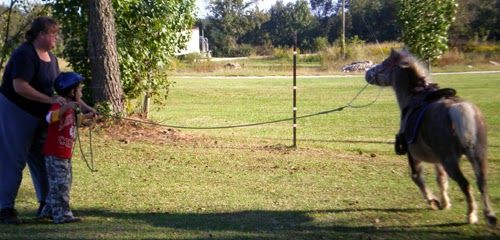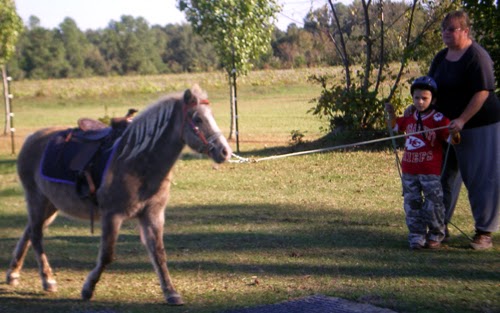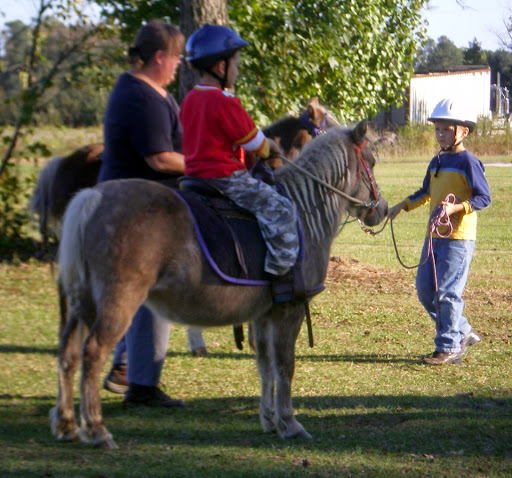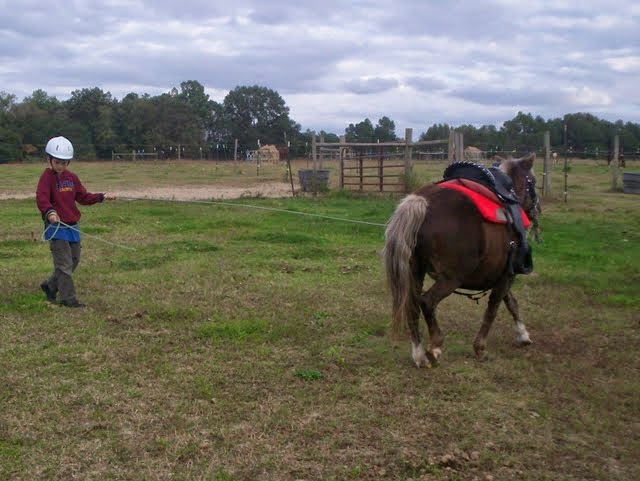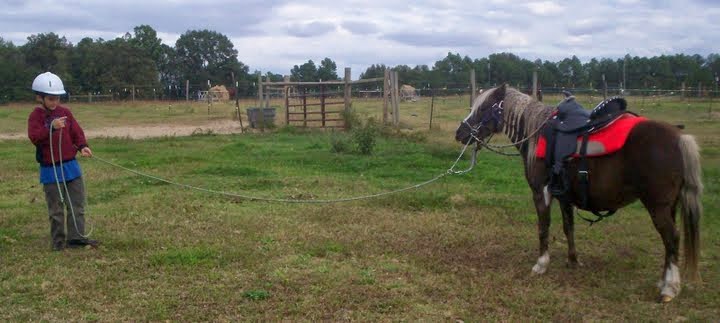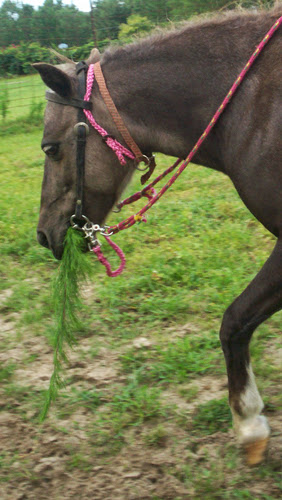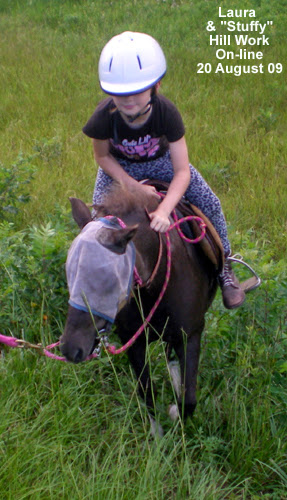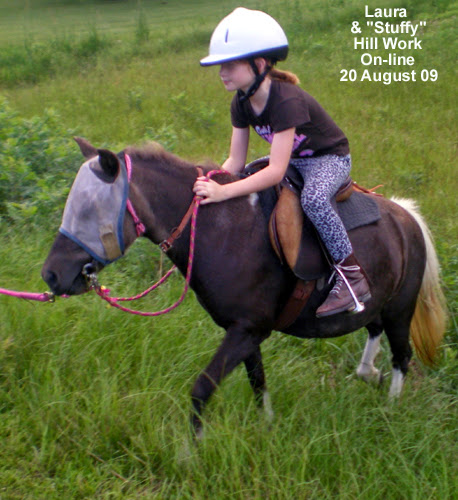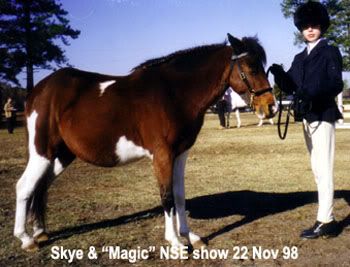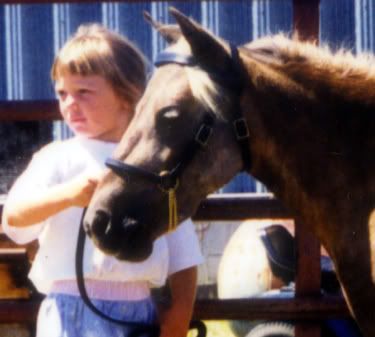OK - ready to be flamed...
This is subjective to me. I'm not a vet, however, as a kid, student, young adult and instructor and trainer, I've worked with and WATCHED many, many jumping horses and ponies. I've also been in the Army and lifted weights and jogged/run.
What is important is building up muscles and bodies to deal with the "impact" of taking off and landing. In a case of mini horses, they aren't carrying weight BUT they are still taking off and landing. Years ago, it was believed that a young horse wasn't mature until 5 yrs of age. A couple of years ago, I remember a some info put out that that didn't happen until 8-10 yrs of age. I can not remember the source nor can I find if I saved it on my computer. That's MATURITY. It's still important to build up a horse - conditioning for stamina, wind & length of time that they will be worked.
A 5 yr old that has been conditioned since a younger age is going to be able to jump better for a longer time than a 10 yr old pulled out and just started w/o much conditioning.
That said, there is also the cumulative affect - both time during each session AND time as in years of jumping. Jumping is "pounding". It both strengthens and can tear apart/weaken the leg structure...
IF you sit out in a pasture w/ loose ponies/horses, you will see foals and yearlings (& others) bouncing around, jumping, bucking, rearing, taking up and doing LOTS of airs ABOVE the ground which they then land from. This isn't forced and their bodies/legs/wind tell them when it's time to quit. Some will run and naturally jump anything in their path - others will actually go around anything that presents itself in it's path (if he can) OR they will literally trip and fall (I learned years ago to avoid those babies for the type of riding I did - they just are not athletic enough for my needs AND they could easily fall on or with ME). Those that jump will naturally jump (and love it) and later they will jump when you ask them to. The ones that go around objects are the ones that never really like to jump - in hand, while lounged or while ridden.
The generally accepted ages for "working" or "training" a horse to jump is after they've reached 3 yrs of age and their knees have completely closed (like a soft spot on a human babies head). You still want to work with them - building their conditioning as well as training. Personally, I DO work with weanlings and yearlings - to go over objects. Sometimes that means they JUMP - they are not forced to jump and eventually they will step over or up onto the object if asked. I do some of that work in a circle - more so now than in years past due to MY AGE and CONDITION (not as young or as fit, LOL) - on a long lead or a lounge line. That "jump" work is not prolonged during a session nor every day. Since my current focus is not on jumping a full course these days (a minimum of 8 jumps, if I remember right), I only work over objects in a singular fashion...
When I was training jumping ponies/horses, we always started with cavaletti. That means starting with one pole on the ground that a horse is walked, trotted and cantered/loped over. They learn to jump, then step over it naturally. Once they aren't being silly and just lift their legs over it w/i stride, a 2nd pole is added. It is based on stride at first (you need to know the basic length of stride of your horse) - later you can change it up - to teach your horse to lengthen and shorten his stride. In larger ponies/full size horses, we often raised one side or the other of the cavaletti pole to teach them to lift legs/hooves higher, then put it up on a riser so it is same height all the way across. Then we introduced a jump either singly or at the end of a run of cavaletti. Young riders are taught to jump the same way - learning to balance over the cavaletti BEFORE going over any jumps. Then you can start adding in other jumps. It takes training/teaching time to build from cavaletti to jumps - it is a progression.
I have various pics of some basic beginning work but not much as when working with green ponies/young riders - it's more about paying attention than taking pics. I have other pics in other time frames/levels of training.
********
AS to what to use to build your jumps - ANYTHING!!
Here's 4x4s and buckets and cinder blocks. Same daughter, different young mounts in different years. Shetland is 51/2 years but has just started jumping. Arab mare is not quite 4 yrs and has also just started jumping. Both got cavaletti work before this stage and the Arab a LOT more after (the Shetland mare passed the following May).
a combination "natural" obstacle w/ several components depending on which way you go into it. Cupid is just turning 3. The foal is attached to his dam by a halter/belly rope and either has to walk or jump over the log. Here he is jumping - he is 2 months old. Later (same day) he stepped over it while still tied to his dam, and jumped when galloping and turned loose.
OK posting this - my computer is UNHAPPY...
 I never jumped my minis high, only what they were comfortable with, and I found it more enjoyable to just jump the jump with them. I only have a 3.9 year old filly, a 15 yo mare, a 1.8 year old colt and a 11 month old colt.
I never jumped my minis high, only what they were comfortable with, and I found it more enjoyable to just jump the jump with them. I only have a 3.9 year old filly, a 15 yo mare, a 1.8 year old colt and a 11 month old colt. I have made a jump out of 2 construction cones and a PVC pipe and I pound it worked great and you just have the end of the pipe just sitting so if the horse makes a mistake during the jump it will fall down easily.
I have made a jump out of 2 construction cones and a PVC pipe and I pound it worked great and you just have the end of the pipe just sitting so if the horse makes a mistake during the jump it will fall down easily.





